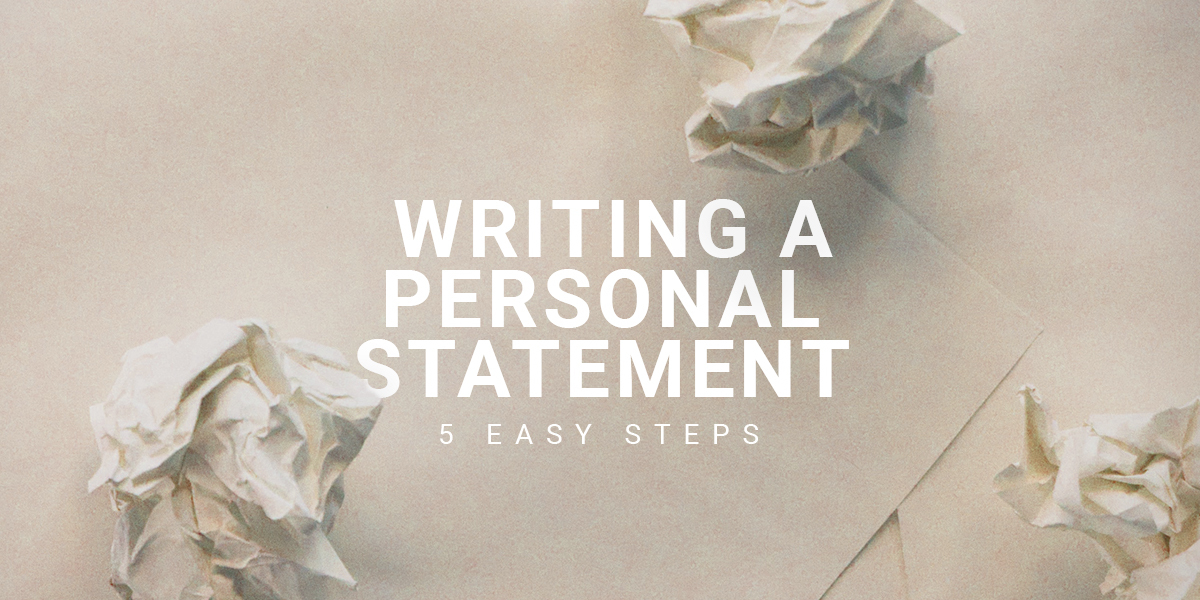
Not to be confused with a cover letter, a personal statement can make or break your job application. A cover letter is a supplement to your CV when contacting employers. You’ll typically come across a personal statement half way through an application form with a list of questions and a large empty box for your response. This gives personal statements more direction and a tighter structure to adhere to. This edition of Get Started will equip you with the toolkit to produce excellent personal statements every time.
The Objective
Personal statements can be overwhelming. It’s important to remember the purpose of your writing. Every paragraph must ultimately build on your overall argument to convince an employer you are the best fit for the job.
Let’s break it down. The instructions you’re given will look similar to this: Please tell us how your qualifications, knowledge, experience and skills meet the personal specification for this post and would enable you to deliver the duties listed in the job description.
At first glance, this sentence is asking a lot, but once we’ve split it up it gives you a structure for your response. You need to directly address the personal specification and job description. In reality, these will be very similar and are provided for you to use. Make a list to understand exactly what the role entails.
Next, focus on yourself. “Qualifications, knowledge, experience and skills,” allows you full range to draw in anything you’ve learnt, participated in, or achieved as proof you deserve the position. Make a second list (or use your CV) and start to see how your experience can be linked to the qualities they’re looking for.
Top tip - Don't be repetitive. If you have multiple examples of teamwork, collect them into one paragraph. You have a lot of ground to cover, so don't bore the employer.
Do Your Research
When writing your personal statement, bare in mind the company’s goals. Regardless of the sector, every organisation has some form of output that the employees facilitate – it could be a product or an event. Make sure you know what this is, and find ways to add it into your paragraphs.
It’s worth having a think about how the role you’re applying for fits into the company structure. For example, if it’s an assistant role, don’t only talk about your managerial experience. Make it relevant. Overselling yourself can lose you the job. The best way to know if you’re heading in the wrong direction is to look back at the personal specification. Are you ticking them off as you go?
Structure
Frame your personal statement with an introduction and conclusion. This doesn’t need to be more than a couple of sentences. Give a brief summary of your situation and explain why you want the job. Your conclusion refers back to this in hindsight of all the reasons you’ve given.
For the main body of the content, there are numerous ways to hit all the criteria. We recommend grouping your experience based on skills rather than describing each of your jobs in turn. This differentiates your personal statement from your CV and avoids it reading like an extended list.
This structure also allows you to easily draw in company details. For instance, say your prospective company runs a scheme aimed at elderly people and you have experience volunteering at a care home.
Draw in company details – do they run a particular scheme for elderly people and you have volunteered for a care home. If you’re struggling to match certain qualifications or skills you have to the job description, there’s a chance they’re not relevant enough to be included.
Top Tip - If you don't have a great deal of work experience, don't worry. You can pick out different details from the same previous job to address different criteria.
Language
It goes without saying that you should write in a professional, consistent tone throughout the personal statement. Keep your language concise and persuasive. Once you’ve completed a first draft, there are two rules we encourage you to stick to:
- Check that you have addressed each part of their requirements. Whether they asked a series of questions or used a statement like the one discussed above, your writing needs to remain focused around it.
- This is the most important piece of advice we can give you. Always, and we mean always, PROOFREAD YOUR PERSONAL STATEMENT. If there are multiple quality candidates, of which you are one, but there are grammatical errors in your writing, an employer will not hesitate to eliminate you from the running.
Top Tip - Incorporate the phrasing used in the application form to describe the job and key responsibilities. These are known as key words and are often looked for by employers.
C.A.R.L
The C.A.R.L structure is one way to break down your points into paragraphs that will hit the criteria and allow you to evaluate your experiences. If you’re addressing a particular skill, you may repeat this structure several times within the same paragraph to give multiple examples.
Context – What was the situation or work experience?
Action – Explain with relevant details what action you took in the situation.
Result – What positive outcome came from your action?
Learnt – This is your chance to evaluate. Show that you are actively learning from your experiences. This could look something like: “What I learned from managing my own time is that…”
That’s all from us today. Get started and good luck.